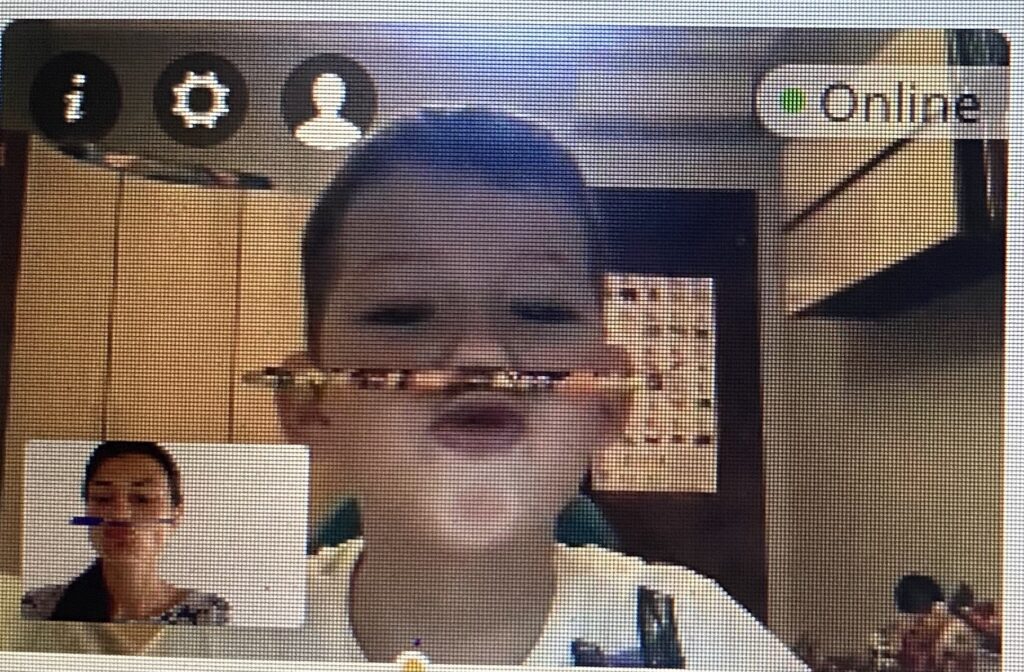Many new teachers might feel a little intimidated by the prospect of teaching English to beginners. Fear not! It’s quite unlikely your student will have zero grasp of English phrases – especially if the class is online. In reality, the student will likely know some basic words and phrases. You don’t need to know your student’s native language to conduct a successful class. Just be confident in the skills you mastered during your TEFL course, and follow these five tips to teach English to beginners.
Not yet certified? Browse online TEFL courses.
1. Establish a routine
So, you’re ready to teach English online, and it turns out your first student is a beginner. You’re probably panicking a little and wondering, “How do I give a good lesson?” First things first: It’s important for you and for your beginner student to get into a routine. Perhaps you’d like to focus on writing and grammar during the first 20 minutes and then move on to some listening exercises. Or, maybe start the class with a verbal ESL icebreaker.
Whatever you feel suits you and your student the most, make sure to establish a routine in order for your beginner to feel comfortable and get into the groove. English is hard enough for beginners, so it’s best not to confuse them with unstructured classes.
Learn more about online teaching best practices.
2. Adjust your register
To achieve the best results with beginners, it’s important that you meet them at a level they will understand. One way to do this is to adjust your language register, or the way you speak, by using familiar vocabulary when you teach new concepts, keeping your speaking pace slower than normal, and focusing on clear pronunciation.
Even if your student is an adult taking a beginner online course, make sure that you adjust your expectations. Everyone has to start somewhere, and your job as a teacher is to ensure that the transition to the next level of English is a smooth one.

3. Repetition, repetition, repetition
Beginners really benefit from repeating exercises as well as hearing you repeat the same complicated word many times and the same answers to questions. Just make sure your student is repeating correctly! There’s nothing worse than having to correct an error that has been drilled into your beginner student’s head.
Also, try repeating the same concepts in different ways. For example, if you’re giving a lesson on conjunctions, try teaching the concept with a song (YouTube is your best friend here) and also give a written exercise. If you want to go even further, give your beginner student a reading exercise with many conjunctions, too.
4. Use a variety of ESL teaching techniques
Still wondering, “Just how do I start teaching online for beginners?” You may think it’s a challenge, especially if you’re working with children in an online setting. However, if you master a couple of techniques, you’ll be prepared to succeed.
One of the best techniques to teach English to beginners is called total physical response (TPR). As you might guess, it’s a dynamic way to teach with movement. One clear example is the game “Simon Says,” which works very well with little ones. If you’re teaching a beginner adult, you can try giving commands and asking for miming responses.
You can also try using realia in the ESL classroom. This is another popular technique that refers to incorporating authentic objects from real life into the lesson. Most teachers use realia to demonstrate the meaning of vocabulary words. For example, if you’re teaching vocabulary for clothing, you can grab actual items of clothing from your own closet and show them to the student or make a game of asking your student to find particular items in his or her closet.

5. Let them speak!
To teach English to beginners, you have to let them talk, make mistakes, and correct those mistakes. Your students’ level of conversation will be far from perfect, so you’ll need a lot of patience to guide the student toward correcting their own mistakes to ensure they learn words and concepts correctly.
There’s no better way to get beginner students to improve than by having them actively participate in lessons. And if they’re shy, try motivating them! There are different reward systems for teaching English that you can implement. In fact, rewards work especially well with younger students – it’s one of the main ways to give them feedback.
Now that you know how to teach English to beginners step by step, you can conquer this once-scary territory. Just follow these tips, and these online lessons will not only be productive but enjoyable too.






